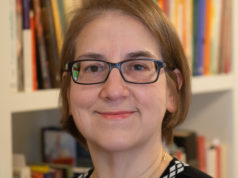Over the past year, the Journal of Vascular Surgery and its two affiliated journals have undergone a number of important changes.
Editorial boards have been revamped, disadvantageous limits on the number of contributing authors and on references have been scrapped, and editors’ videos accompany every new issue. New short abstracts, take-home messages, and extended tables of contents allow even the most time-crunched clinicians to get up to speed.
Even the look of the journals has changed – with a red color scheme for JVS, a blue one for JVS-VL, the venous and lymphatic disorders journal, and a mixed red and blue one for the open-access publication dedicated to cases and techniques.
Peter Gloviczki, MD, of the Mayo Clinic in Rochester, Minn., says he hopes these changes will help raise the journals’ impact, and improve the quality of submissions and the review process.
On Saturday morning, Dr. Gloviczki, the editor in chief of JVS, and senior editor Peter F. Lawrence helm a seminar that describes not only what they’ve been doing since taking over the journals’ leadership in July 2016, but how more SVS members can take part by producing quality papers or reviewing for the journals.
Dr. Gloviczki and Dr. Lawrence have also invited Dr. Philip Kolh if the University of Liege in Liege, Belgium, to co-lead the seminar. Dr. Kolh, who is editor in chief of the European Journal of Vascular and Endovascular Surgery, will advise on what the EJVES is looking for in its reviews and submissions.
“We believe it is important for JVS and EJVES to work together, to develop joint guidelines, to avoid repetition and redundancy, and double-publish papers that are important for both readerships,” Dr. Gloviczki said.
Dr. Gloviczki will start the seminar off by discussing the sweeping changes aimed at raising the quality of all three JVS journals and, he hopes, will also affect their impact factor, currently at 3.45 for JVS.
In addition to increasing the scrutiny of the peer review and the number of statistical reviews performed by master statisticians, the editors are looking for systematic reviews, meta-analyses, practice guidelines, and reporting standards – and will publish paper types not previously accepted, such as study protocols.
The journal will retain many initiatives of the previous editors, including the international debates, and will continue recruiting international authors and reviewers. Having the best reviewers, Dr. Gloviczki noted, “is an important parallel to having top-quality studies.”
Dr. Lawrence, of the University of California Los Angeles, will discuss what makes a clinical research paper successful. “We want papers that are highly cited – and the highly cited papers are prospective studies, whether randomized controlled trials or single-arm cohort studies,” Dr. Gloviczki said. “We also favor large retrospective reviews of prospectively collected national or international registries.”
Peter Henke, MD, of the University of Michigan in Ann Arbor, Mich., will talk about what the JVS editors and reviewers want in basic science papers – which Dr. Gloviczki called an important and sometimes overlooked counterpart to the clinical studies. “We believe that our profession must be in charge of basic research, that whoever owns basic research in our field owns the disease,” he said.
“To understand vascular disease you have to start at the basics of anatomy, pathophysiology, etiology, prevention, presentation and finally treatment,” he said, noting that vascular surgeons at many academic centers are conducting experimental studies and other basic research, efforts often supported by SVS grants.
Last year the JVS editors re-named the journal’s basic science section and called it “From Bench to Bedside” to try and capture the importance of preclinical vascular studies. “It’s a relatively small section of our journal but it’s important,” Dr. Gloviczki said. “And now we are really pushing to get commentaries that emphasize the potential clinical application of the basic science research.”
Richard L. Amdur, MD, of George Washington University in Washington, DC, will talk about what the JVS journal editors want to see in terms of statistics, while Marc L. Schermerhorn, MD, of Beth Israel Deaconess Medical Center in Boston and Martin Bjorck, MD, PhD, of Uppsala University, Uppsala, Sweden, will both discuss mining the large vascular registries from the United States and Europe for studies attractive to JVS or EJVES.
“There are so many papers where real-world experience is given to us by analyzing these registries,” Dr. Gloviczki said. Studies from the SVS Vascular Quality Initiatives database, the American College of Surgeons’ National Surgical Quality Improvement Program, the National Inpatient Sample, the Swedish Vascular registry, VADUNET and the International Consortium of Vascular Registries, “have changed the way we practice vascular surgery, and we publish multiple papers from these in every issue.”
Saturday, June 3
6:30 a.m. – 8:00 a.m.
Breakfast Session B9: How to Write a Paper and Have it Accepted in the JVS or EJVES













